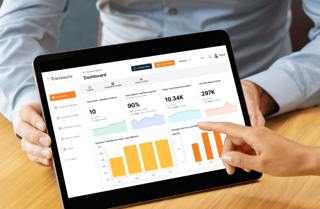1 Making the business case
This is usually a two-step process. First of all, senior managers will probably need convincing that there is a requirement for fleet management software.
The next stage of approval comes when a preferred supplier has been chosen. Arguably the first step is the hardest. So how do fleet operators overcome it?
Mycompanyfleet’s advice is to point out the costs associated with running the fleet.
“The company fleet is usually the second largest cost centre a company has after salaries and while nobody suggests that payroll systems should be run manually, we often see companies without any automated ways of managing their fleet,” says Jon Tandy, business development manager at Mycompanyfleet.
“This is particularly relevant for fleets of 200 vehicles and above, and modern fleet management systems should provide the end user with greater control over all aspects of fleet operation, particularly in terms of controlling costs.”
Some fleet managers responsible for more than 1,000
vehicles say that fleet management software is a necessity. Others make do with the software provided by their leasing company, usually if they have a solus deal.
But even in these circumstances it is possible to make the case for a separate fleet management software package.
Ashley Sowerby, managing director of Chevin Fleet Solutions, points out that having a separate system means the company is free to leave that leasing company and doesn’t have “all their eggs in one basket”.
Fleet management software systems such as Chevin’s may also allow companies to benchmark leasing providers.
There are “intangible savings”, according to Sowerby.
“For example, if you don’t do driver licence checking, what happens if a company car driver has an accident?”
Time saving benefits
As part of the business case, therefore, fleet managers should stress the importance of being able to demonstrate duty of care and compliance by using fleet management software.
Time saving benefits can also be highlighted. For example, automating tasks such as driver licence checking and road fund licence renewals will free up a fleet manager’s time to focus on other cost-saving intitiatives.
Most modern fleet management software systems allow managers to manage by exception.
Typically there will be a dashboard highlighting problem areas, which can also save time and help with compliance.
However, Neville Briggs, managing director of CFC Solutions, acknowledges: “It is cost that is usually going to swing the decision.
"If you can demonstrate convincingly that the additional control that fleet software makes possible is going to save money, then you have a strong case.”
So what are some of the cost savings?
Martin Evans, sales and operations director at Jaama, says that the return on investment typically includes: identifying the optimum time to dispose of vehicles before they become expensive to maintain; identifying high cost/rogue vehicles or drivers; identifying fuel savings; maximising fleet utilisation; avoiding using hire vehicles when there are spare unallocated vehicles; ensuring suppliers are not paid without valid order numbers; and predicting in advance possible excess pence per mile charges.
Suppliers may help build the business case. Civica, for example, will carry out a free of charge fleet review to identify where efficiencies can be made and costs cut.
“We present this back in a report that customers can use as a basis for their case,” Matt Goodstadt, sales manager at Civica, says.
“It documents the current processes and details the changes that would be made and links these to fully qualified specific savings.”





















Login to comment
Comments
No comments have been made yet.